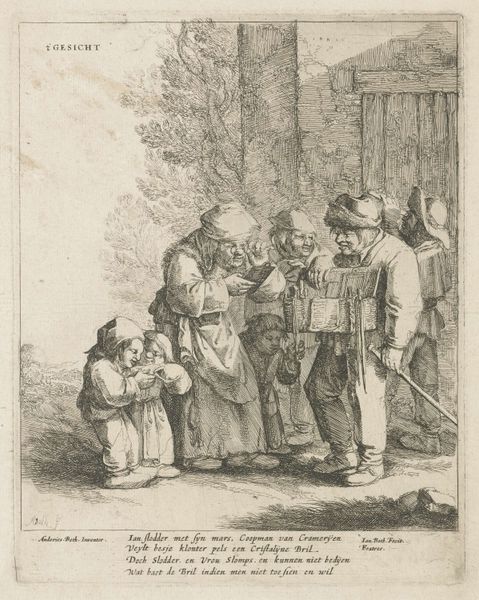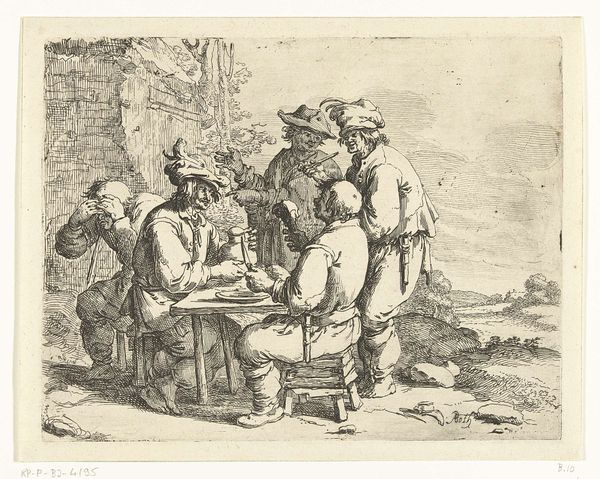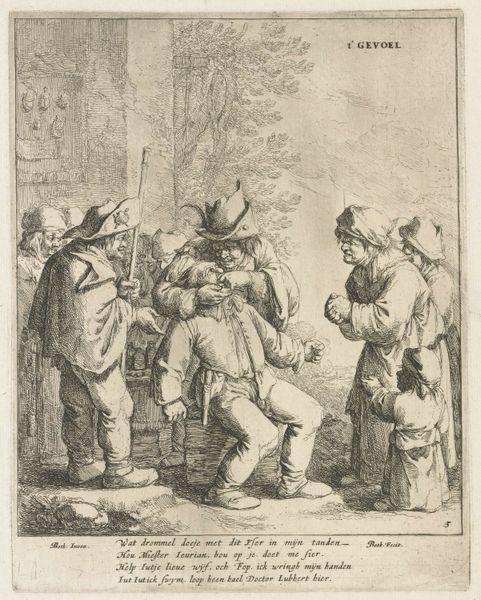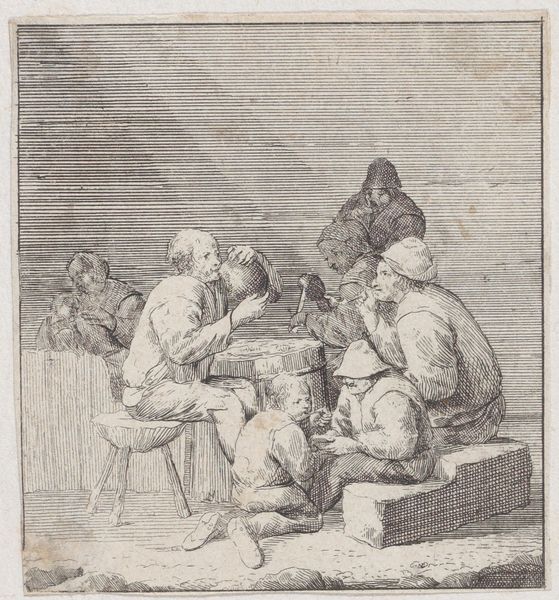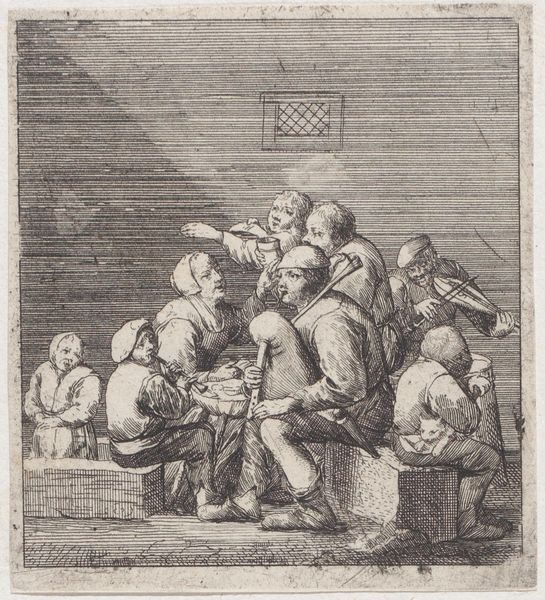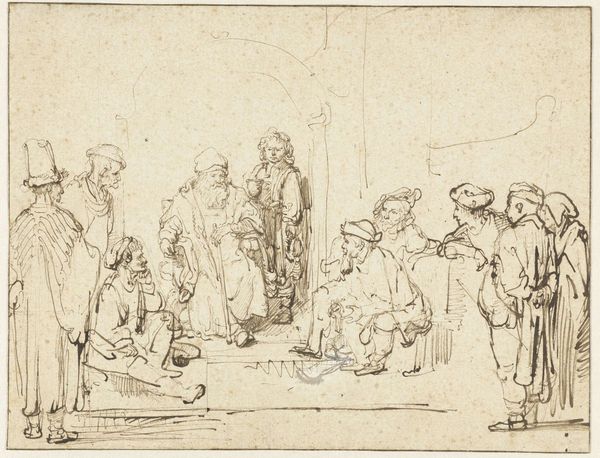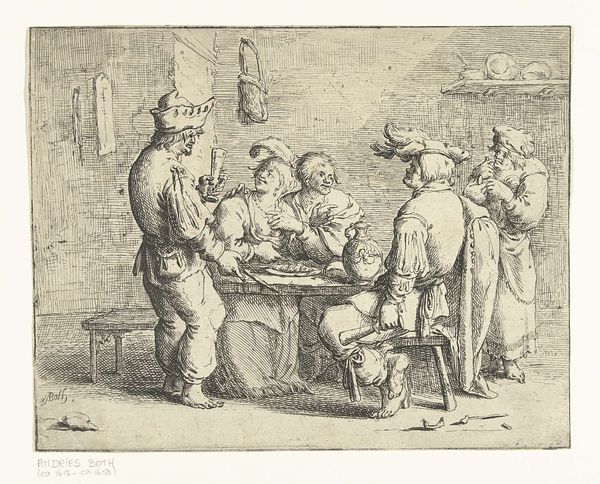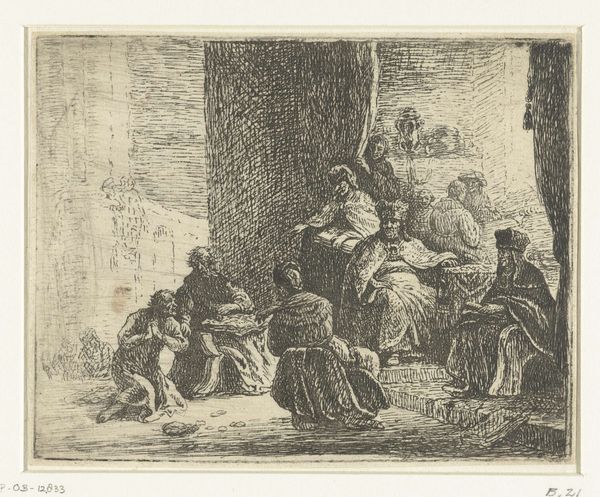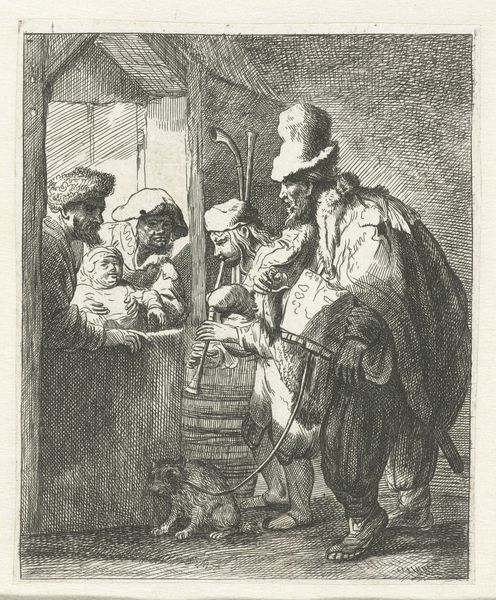
etching
#
narrative-art
#
dutch-golden-age
#
etching
#
genre-painting
#
realism
Dimensions: height 222 mm, width 175 mm
Copyright: Rijks Museum: Open Domain
Curator: Here we have Jan Both’s etching, "Smaak," dating roughly from 1620 to 1638. The print, whose title translates to "Taste," currently resides in the Rijksmuseum. I find it fascinating how Both uses such simple lines to depict this bustling scene of everyday life. What's your immediate impression? Editor: My eye is drawn to the tactile nature of the scene—all the textures! The rough-hewn table, the flour dust in the air, and the sheer number of figures huddled together. It feels very earthy and immediate, focused on the raw materials and processes. You can almost feel the weight of the flour sacks. Curator: It is remarkable, isn't it? The scene seems to represent communal flour tasting or testing—given that this work sits firmly within the tradition of Dutch Golden Age genre painting, this depiction of everyday life has socio-political implications related to class. One wonders how these types of scenes reflected on the rising merchant classes of the era. Editor: Exactly! The choice of etching as a medium also speaks to the democratization of art. Prints were more accessible and affordable than paintings, connecting with broader segments of society and reflecting on the means of their creation. It underscores the working-class roots of the image’s intended viewership. We need to think of who's looking and how labor itself might be understood. Curator: I see your point about broader accessibility through printmaking, which is central to understanding how cultural tastes are created, but there's a darker undercurrent that runs throughout. If one considers how deeply issues like trade and class structure run through Golden Age imagery, then these figures aren’t only engaging in tasting but rather, displaying labor conditions with potentially exploitative connotations. The way that their collective examination also implicates us, as modern spectators. Editor: I think it definitely holds power by making labor and communal tasting an explicit focal point through the application of realistic rendering styles—allowing the consumers of the imagery a deeper, almost visceral connection to it as something produced. The physical involvement really makes this more of an interactive encounter across different viewing eras. Curator: These subtleties only further underline its complexities! A brief look, and now, to new dimensions and deeper appreciation! Editor: Yes, a delicious discovery and perfect illustration!
Comments
No comments
Be the first to comment and join the conversation on the ultimate creative platform.
